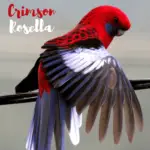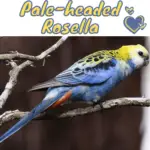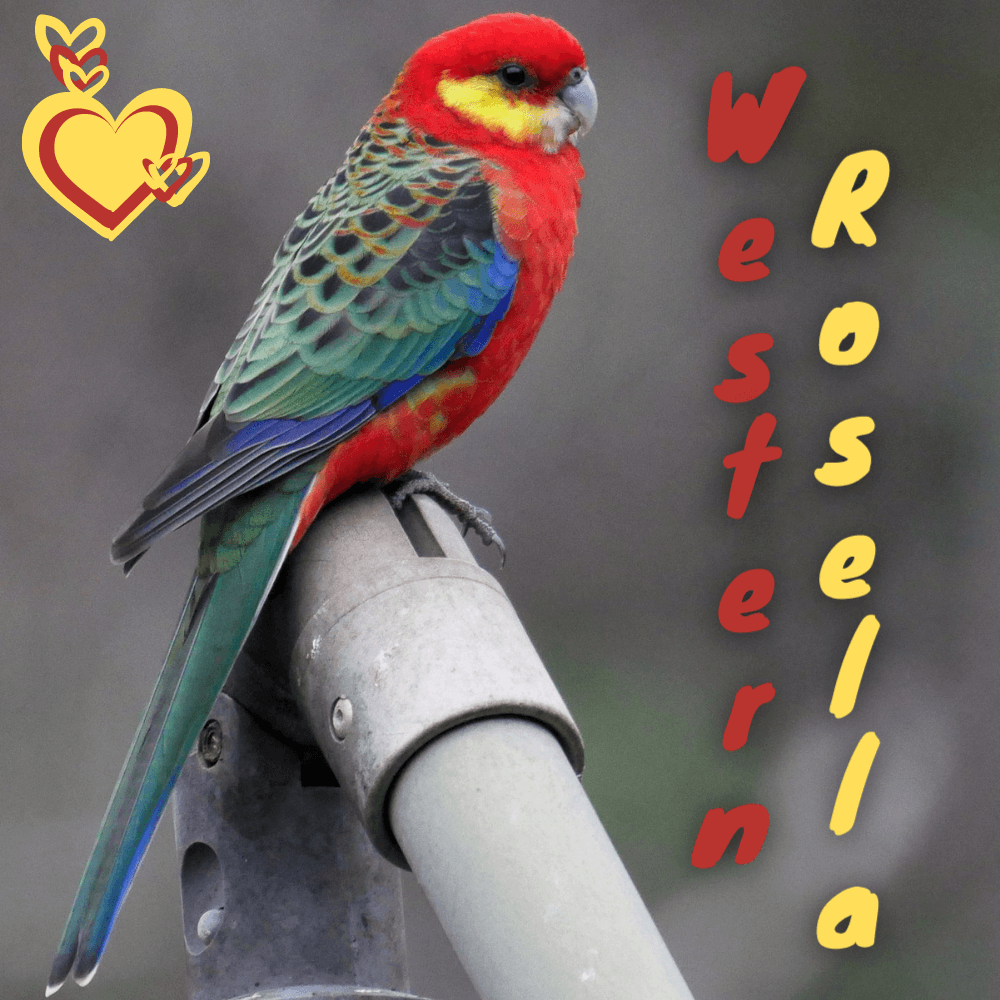
Western Rosella (Platycercus icterotis) 25–26 cm; 52–80 g. Bill whitish; head and underparts red except for ear-coverts and face below eye yellow, and some green barring on flanks;
nape, mantle, and scapulars black with red edges becoming pale green edges with red tips lower down, giving a scaled effect; inner wing-coverts dull green, outer dark blue, black on median coverts; primaries blackish; rump and tail dark green with outer feathers blue-tipped white.
Western Rosella Female has largely green head with red on forehead, smaller, duller yellow facial patch, much green in breast and no red in the mantle; pale underwing stripe.
Immature like a female with no yellow on the face and little red in the underparts. Race xanthogenys has a paler yellow face, buff not green in back scaling, rump dull green to greyish olive, and tail dull blue.
Systematics History
Editor’s Note: This article requires further editing work to merge existing content into the appropriate Subspecies sections. Please bear with us while this update takes place.
The original description was previously attributed to Kuhl alone, but the present version is correct. Two subspecies were recognized.
Western Rosella
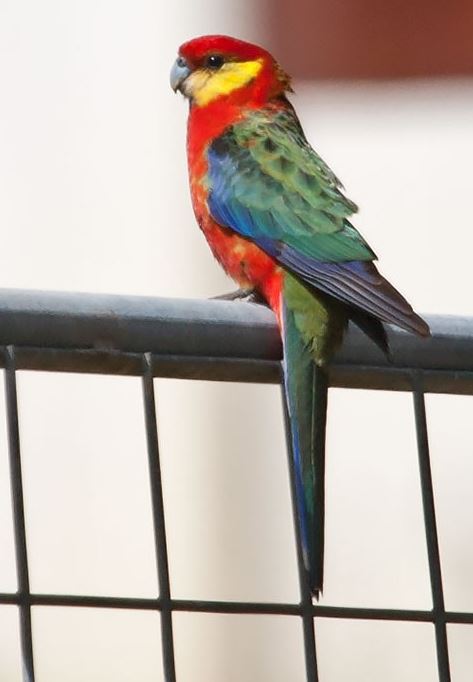
Distribution
Western Rosella Editor’s Note: Additional distribution information for this taxon can be found in the ‘Subspecies’ article above. In the future, we will develop a range-wide distribution article.
Habitat
Open forest, tree-lined cereal fields, riverine growth such as jarrah (Eucalyptus marginata), Banksia, and tea-tree thickets, Acacia- Casuarina scrublands, grasslands, and orchards.
Movement
Generally sedentary, but in Moora, district birds arrive in Dec to breed and depart in Jun–Jul.
Diet and Foraging
Western Rosella Seeds of grasses and herbs, with birds visiting stubble fields to pick up grain; fruits, berries, flowers of E. marginata, coating of zamia palm (Macrozamia ridley) seeds, and ripening apples also recorded, and some damage may be done in orchards.
Sounds and Vocal Behavior
Western Rosella call is a loud, lively “kweenk” or “kwee-kweek!”. When perched also repeats a series of melodious pure whistles, some quite rhythmic, as well as more squabbling phrases.
Breeding
Aug–Dec. Western Rosella Nest in hollow limb or hole in a tree, commonly in salmon gum (E. salmonophloia) and wandoo (E. wandoo). Eggs 3–7, usually 5; incubation lasts 19 days; nestling period c. 5 weeks.
SOURCE: Marcrussophotography
Conservation Status
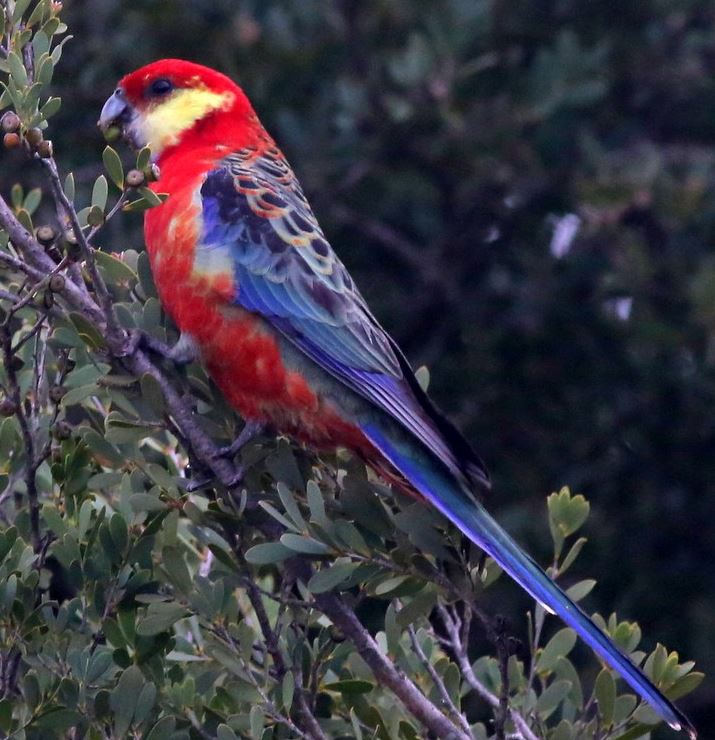
Not globally threatened. CITES II. Relatively common and has benefited from clearance of closed forest. However, numbers may be naturally depressed by Barnardius zonarius , a
larger competitor for the same food resources. Moreover, poor regeneration of nest trees is a long-term cause for concern, and there have been local declines and losses. The Western Rosella species is protected by law, but in two shires an open season has existed to control crop depredations.

